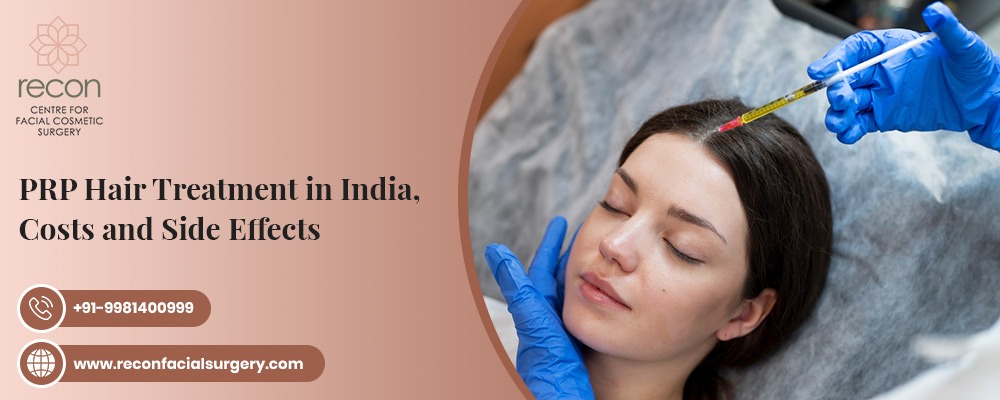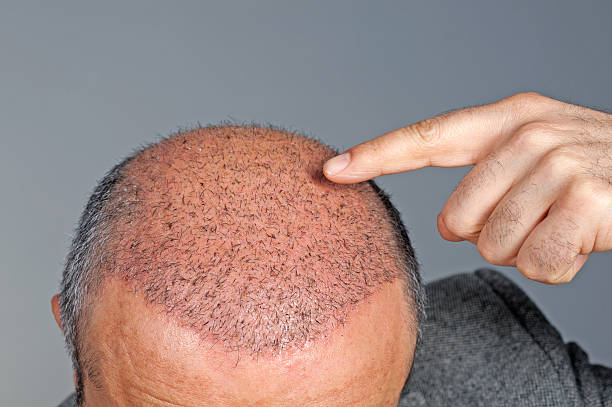
Platelet-Rich Plasma (PRP) treatment is becoming a popular solution for people experiencing hair loss. It is a natural and effective way to stimulate hair growth using the body’s own healing properties. But one of the most common questions people ask is, “How often do you need PRP treatment for hair growth?” In this article, we will explore the treatment process, frequency, benefits, and results.
What is PRP Treatment for Hair Growth?
PRP treatment involves drawing a small amount of blood from your body, processing it to separate the platelet-rich plasma, and injecting it into the scalp. The plasma is full of growth factors that help stimulate hair follicles and encourage new hair growth. It is a non-surgical procedure and is considered safe for most people.
How Does PRP Treatment Work?
PRP (Platelet-Rich Plasma) treatment works by using the body’s own platelets to stimulate hair growth. The process begins with drawing a small amount of the patient’s blood, which is then placed in a centrifuge to separate the platelet-rich plasma from other blood components. The concentrated PRP, rich in growth factors, is then injected into the scalp, targeting areas of hair thinning. These growth factors help stimulate dormant hair follicles, improve blood circulation, and promote healthier, thicker hair growth. The procedure is minimally invasive, requires multiple sessions for optimal results, and is often combined with other treatments for enhanced effectiveness.
The PRP treatment process involves three main steps:
- Blood Collection: A small sample of blood is taken from your arm, similar to a routine blood test.
- Processing the Blood: The blood is placed in a centrifuge machine to separate the platelet-rich plasma from other components.
- Injection into the Scalp: The PRP is then injected into areas of the scalp where hair thinning or hair loss is occurring.
PRP helps improve blood circulation to the hair follicles and strengthens weak or dormant follicles, encouraging natural hair regrowth.
How Often Do You Need PRP Treatment for Hair Growth?
PRP treatment for hair growth typically requires 3–4 initial sessions spaced 4–6 weeks apart. For maintenance, follow-up sessions every 4–6 months help sustain results. The frequency depends on hair loss severity, individual response, and treatment goals. A specialist can create a personalized plan for long-term hair restoration success.
Initial Treatment Phase:
The initial PRP treatment phase typically involves three to four sessions, spaced four to six weeks apart, to stimulate hair growth effectively. During each session, a small amount of blood is drawn, processed in a centrifuge to extract platelet-rich plasma (PRP), and injected into thinning areas of the scalp. This phase focuses on awakening dormant follicles, improving scalp circulation, and strengthening hair strands. Patients may notice reduced hair shedding within the first month, followed by gradual thickening and regrowth over the next few months. Consistency in treatments, along with proper scalp care, enhances the effectiveness of PRP therapy.
Maintenance Phase:
Factors That Affect PRP Treatment Frequency:-
Several factors determine the frequency of PRP treatments for hair restoration. The severity of hair loss plays a key role—mild cases may need fewer sessions, while advanced thinning requires more frequent treatments. Age and overall health affect the body’s healing response, influencing how quickly PRP stimulates hair growth. Underlying conditions like hormonal imbalances, thyroid disorders, or nutrient deficiencies may impact effectiveness. Lifestyle choices such as diet, smoking, and stress levels also play a role. Additionally, individual response to PRP varies, requiring personalized treatment plans. Regular follow-ups with a specialist ensure optimal frequency adjustments based on progress and results.
Several factors determine how often you need PRP treatment for hair growth, including:
Severity of Hair Loss: People with severe hair thinning may need more frequent sessions.
Age and Genetics: Some individuals may require more maintenance treatments due to genetic predisposition.
Overall Health: A healthy diet and lifestyle can improve PRP treatment results.
Medical Conditions: Certain medical conditions like alopecia or hormonal imbalances may require additional sessions.::
How Long Does It Take to See Results from PRP Hair Treatment?
PRP treatment does not provide instant results. Most people start noticing improvements within three to six months after their initial treatment phase. Hair shedding decreases first, followed by new hair growth, and finally, thicker and stronger hair.
Typical Hair Growth Timeline with PRP:
1 to 2 months: Reduction in hair shedding
3 to 4 months: New hair starts growing
6 months and beyond: Hair appears fuller and stronger
Who is a Good Candidate for PRP Hair Treatment?
A good candidate for PRP hair treatment is someone experiencing early-stage hair thinning or mild to moderate hair loss, especially due to androgenetic alopecia (male or female pattern baldness). Those with active hair follicles respond best, as PRP stimulates existing follicles rather than creating new ones. Individuals with stress-induced hair loss, postpartum shedding, or traction alopecia may also benefit. Ideal candidates should be in good overall health, without conditions like blood disorders, autoimmune diseases, or scalp infections. PRP is less effective for complete baldness or severe scarring alopecia. Commitment to multiple sessions and maintenance treatments improves long-term results.
PRP treatment works best for individuals experiencing early-stage hair loss or thinning hair. It is ideal for people who:
Have mild to moderate hair thinning
Are not completely bald
Have healthy hair follicles
Want a natural treatment option
Benefits of PRP Treatment for Hair Growth
PRP (Platelet-Rich Plasma) treatment is a natural, non-surgical solution for hair growth. It stimulates hair follicles using growth factors from the patient’s own blood, promoting thicker, healthier hair. PRP helps reduce hair thinning, improves scalp circulation, and strengthens existing hair strands. The procedure is minimally invasive, with little to no downtime, making it a convenient option. Since it uses the body’s own platelets, the risk of allergic reactions is low. PRP works best for early-stage hair loss and can enhance results when combined with other treatments. Regular sessions help maintain hair density, making it a safe and effective option.
Non-Surgical & Natural Treatment: Uses the body’s own plasma, reducing risks.
Minimal Downtime: Quick recovery and no major side effects.
Stimulates Hair Follicles: Encourages natural hair regrowth.
Safe for Most People: Works for men and women with hair thinning.
How to Maintain Hair Growth After PRP Treatment
To maintain hair growth after PRP treatment, follow a healthy hair care routine. Use a mild, sulfate-free shampoo and avoid excessive heat styling. Maintain a balanced diet rich in vitamins, proteins, and iron to support hair health. Stay consistent with prescribed treatments like minoxidil or finasteride if recommended. Scalp massages can improve blood circulation, promoting stronger hair growth. Reduce stress through exercise or meditation, as stress can contribute to hair loss. Avoid smoking and excessive alcohol consumption, which can affect hair health. Regular PRP maintenance sessions, as advised by your doctor, will help sustain long-term hair growth results.
- Follow a Healthy Diet: Eat foods rich in vitamins and minerals that support hair health.
- Use Gentle Hair Care Products: Avoid harsh shampoos or hair treatments that may damage your hair.
- Reduce Stress: High stress levels can contribute to hair loss.
- Avoid Smoking and Excessive Alcohol Consumption: These habits can slow down hair growth.
- Stick to the Recommended PRP Schedule: Regular follow-up sessions help maintain results
Conclusion:-
PRP treatment is an effective solution for hair loss, but consistency is key. Most people need three to four initial treatments, followed by maintenance sessions every four to six months. Results are gradual, but with proper care and follow-ups, you can enjoy healthier, fuller hair. If you’re considering PRP therapy, consult a hair specialist to determine the best treatment plan for you.

